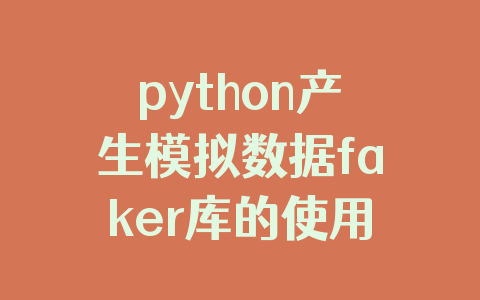图例如下

https://github.com/Dongvdong/python_Smartvoice
代码如下
# -*- coding: utf-8 -*-
# 树莓派
from pyaudio import PyAudio, paInt16
import numpy as np
from datetime import datetime
import wave
import time
import requests#导入requests库
import urllib, urllib.request, pycurl
import base64
import json
import os
import sys
from imp import reload
# 调用电脑API生成语音交互
import speech
import win32api
import os
import sys
import time
import win32con
reload(sys)
#sys.setdefaultencoding( \"utf-8\" )
#一些全局变量
save_count = 0
save_buffer = []
t = 0
sum = 0
time_flag = 0
flag_num = 0
filename = \'\'
duihua = \'1\'
def getHtml(url):
html= requests.get(url)
# html.encoding = \'utf-8\'#防止中文乱码
return html.text
def get_token():
apiKey = \"AxXDYEN27Ks9XHocsGmCEdPm\"
secretKey = \"61cd52759f4d704d91c155a22ff7183d\"
auth_url = \"https://openapi.baidu.com/oauth/2.0/token?grant_type=client_credentials&client_id=\" + apiKey + \"&client_secret=\" + secretKey;
res = requests.get(auth_url)
#res.encoding = \'utf-8\'#防止中文乱码
#print (res.text)
return json.loads(res.text)[\'access_token\']
def dump_res(buf):#输出百度语音识别的结果
global duihua
#print (\"字符串类型\")
#print (buf)
a = eval(buf)
#print (type(a))
if a[\'err_msg\']==\'success.\':
#print (a[\'result\'][0])#终于搞定了,在这里可以输出,返回的语句
duihua = a[\'result\'][0]
print (\"我:\"+duihua)
def use_cloud(token):#进行合成
fp = wave.open(filename, \'rb\')
nf = fp.getnframes()
f_len = nf * 2
audio_data = fp.readframes(nf)
cuid = \"9120612\" #产品id
srv_url = \'http://vop.baidu.com/server_api\' + \'?cuid=\' + cuid + \'&token=\' + token
http_header = [
\'Content-Type: audio/pcm; rate=8000\',
\'Content-Length: %d\' % f_len
]
c = pycurl.Curl()
c.setopt(pycurl.URL, str(srv_url)) #curl doesn\'t support unicode
#c.setopt(c.RETURNTRANSFER, 1)
c.setopt(c.HTTPHEADER, http_header) #must be list, not dict
c.setopt(c.POST, 1)
c.setopt(c.CONNECTTIMEOUT, 30)
c.setopt(c.TIMEOUT, 30)
c.setopt(c.WRITEFUNCTION, dump_res)
c.setopt(c.POSTFIELDS, audio_data)
c.setopt(c.POSTFIELDSIZE, f_len)
c.perform() #pycurl.perform() has no return val
# 将data中的数据保存到名为filename的WAV文件中
def save_wave_file(filename, data):
wf = wave.open(filename, \'wb\')
wf.setnchannels(1)
wf.setsampwidth(2)
wf.setframerate(SAMPLING_RATE)
wf.writeframes(b\"\".join(data))
wf.close()
NUM_SAMPLES = 2000 # pyAudio内部缓存的块的大小
SAMPLING_RATE = 8000 # 取样频率
LEVEL = 1500 # 声音保存的阈值
COUNT_NUM = 20 # NUM_SAMPLES个取样之内出现COUNT_NUM个大于LEVEL的取样则记录声音
SAVE_LENGTH = 8 # 声音记录的最小长度:SAVE_LENGTH * NUM_SAMPLES 个取样
exception_on_overflow=False
# 开启声音输入pyaudio对象
pa = PyAudio()
stream = pa.open(format=paInt16, channels=1, rate=SAMPLING_RATE, input=True,
frames_per_buffer=NUM_SAMPLES)
token = get_token()#获取token
key = \'35ff2856b55e4a7f9eeb86e3437e23fe\'
api = \'http://www.tuling123.com/openapi/api?key=\' + key + \'&info=\'
while(True):
# 读入NUM_SAMPLES个取样
string_audio_data = stream.read(NUM_SAMPLES,False);
# 将读入的数据转换为数组
audio_data = np.fromstring(string_audio_data, dtype=np.short)
# 计算大于LEVEL的取样的个数
large_sample_count = np.sum( audio_data > LEVEL )
temp = np.max(audio_data)
if temp > 2000 and t == 0:
t = 1#开启录音
print (\"---------主人我在听你说!(5S)----------\")
begin = time.time()
# print (temp)
if t:
#print (np.max(audio_data))
if np.max(audio_data)<1000:
sum += 1
# print (sum)
end = time.time()
if end-begin>5:
time_flag = 1
# print (\"五秒到了,准备结束\")
# 如果个数大于COUNT_NUM,则至少保存SAVE_LENGTH个块
if large_sample_count > COUNT_NUM:
save_count = SAVE_LENGTH
else:
save_count -= 1
if save_count < 0:
save_count = 0
if save_count > 0:
# 将要保存的数据存放到save_buffer中
save_buffer.append(string_audio_data )
else:
# 将save_buffer中的数据写入WAV文件,WAV文件的文件名是保存的时刻
#if time_flag:
if len(save_buffer) > 0 or time_flag:
#filename = datetime.now().strftime(\"%Y-%m-%d_%H_%M_%S\") + \".wav\"#原本是用时间做名字
filename = str(flag_num)+\".wav\"
flag_num += 1
save_wave_file(filename, save_buffer)
save_buffer = []
t = 0
sum =0
time_flag = 0
# print (filename, \"保存成功正在进行语音识别\")
use_cloud(token)
# print (duihua)
info = duihua
duihua = \"\"
request = api + str(info)
response = getHtml(request)
# print ( \"-----1-----\")
dic_json = json.loads(response)
a = dic_json[\'text\']
unicodestring = a
# 将Unicode转化为普通Python字符串:\"encode\"
utf8string = unicodestring.encode(\"utf-8\")
print (\"科塔娜:\"+str(a))
# 电脑说话
speech.say(str(a))
url = \"http://tsn.baidu.com/text2audio?tex=\"+dic_json[\'text\']+\"&lan=zh&per=0&pit=1&spd=7&cuid=7519663&ctp=1&tok=25.41bf315625c68b3e947c49b90788532d.315360000.1798261651.282335-9120612\"
os.system(\'mpg123 \"%s\"\'%(url))
以上就是本文的全部内容,希望对大家的学习有所帮助,也希望大家多多支持自学编程网。













